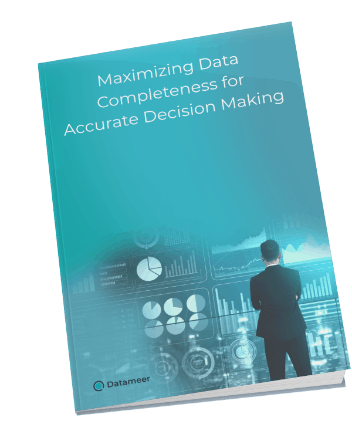
Maximizing Data Completeness for Accurate Decision Making
Learn how Datameer customers use Spectrum to maximize their data completeness for in-depth and well-rounded analytics datasets that drive highly accurate decision-making.

About the Maximizing Data Completeness for Accurate Decision Making Ebook
One of the most important aspects of data engineering and DataOps is to make the final, consumable datasets “analytics-ready.” The definition and structure of an analytics-ready dataset can and will likely be different for each analytics question.
This can leave the DataOps team with the daunting task of defining many datasets, building the required data pipelines, and ensuring delivery. And then, there is the management and governance overhead of the data and data pipelines over time.
Most data integration tools will provide a base set of data transformation functions. But these focus mostly on mapping schemas, converting types, and performing simple aggregations. Many tools rely on data engineers to create SQL scripts to transform the data, a slower and potentially error-prone approach.
Approaches
Learn the various methods to ensure data completeness.
Data Enrichment
See how to use data enrichment functions to enhance data completeness.
Data Organization
Learn how advanced functions can better slice and dice your data for analytics.
Customer Stories
Read how four Datameer customers achieved higher data quality through data completeness.
DATA USEFULNESS AND COMPLETENESS
We use the overall term analytics-ready to define a dataset that is well designed for downstream analytics. Two new terms have emerged that describe the two aspects of a dataset being analytics-ready: x and data completeness.
Data usefulness describes how well the data can be consumed by my analytics or data science tools and the ease with which the analytics team can work with the data. This focuses on the process of de-normalizing, shaping, and organizing data.
REUSE, EXTENSIBILITY, AND COLLABORATION
Three key data pipeline platform capabilities can contribute greatly to both data usefulness and completeness: reuse, extensibility, and collaboration. These features help DataOps processes increase the production speed, output volume, breadth, and quality of analytics datasets both individually and in concert. Without such capabilities, data engineering would not be able to scale to the needs of the business.
Reuse allows existing data pipeline logic to repurposed and supplemented with new logic and resulting datasets. Existing data pipelines can be refactored or supplemented with additional data to create new useful datasets for new analytics.
Extensibility has a similar effect as reuse, with one major difference: the existing data pipeline does not need to be touched. Extended data pipelines can be created using existing data pipelines and adding new logic and data to create custom or more complete datasets.
Collaboration allows data engineering, analysts, and data science teams to ensure usefulness and completeness. The extended project teams can interactively create, explore, and test data pipelines and datasets to create an agile process that ensures project requirements are met and can adjust requirements as needed.